
Designed by Paul Smith 2006. This website is copyrighted by law.
Material contained herewith may not be used without the prior written permission of FAUNA Paraguay.
Photographs on this web-site were taken by Paul Smith, Hemme Batjes, Regis Nossent,
Lars Hansen and Huguito Cabral and are used with their permission.

ON LOCATION IN THE PARAGUAYAN ATLANTIC FOREST
When it comes to humid forest Amazonia grabs all the headlines. Everybody knows the statistics, an area the size of Belgium disappearing every week etc (Or is it an area as big as 100 football pitches? Or is it Belgium that is as big as 100 football pitches?) Meanwhile the Atlantic forest of southeastern South America is quietly ignored by the global media and pretty much everybody else. During a discussion about deforestation with a group of young Paraguayans I was impressed by their knowledge of climate change and its potentially catastrophic consequences, but when I suggested that the chopping down of the Paraguayan Atlantic forest was helping to hasten that demise, the reaction was one of laughter!
-“NOOOOOO!!!” said one group member, “It is chopping down the Amazon forest that causes climate change!!!”
The Atlantic forest may not be the lungs of the earth, but it must qualify as at least the bronchi.
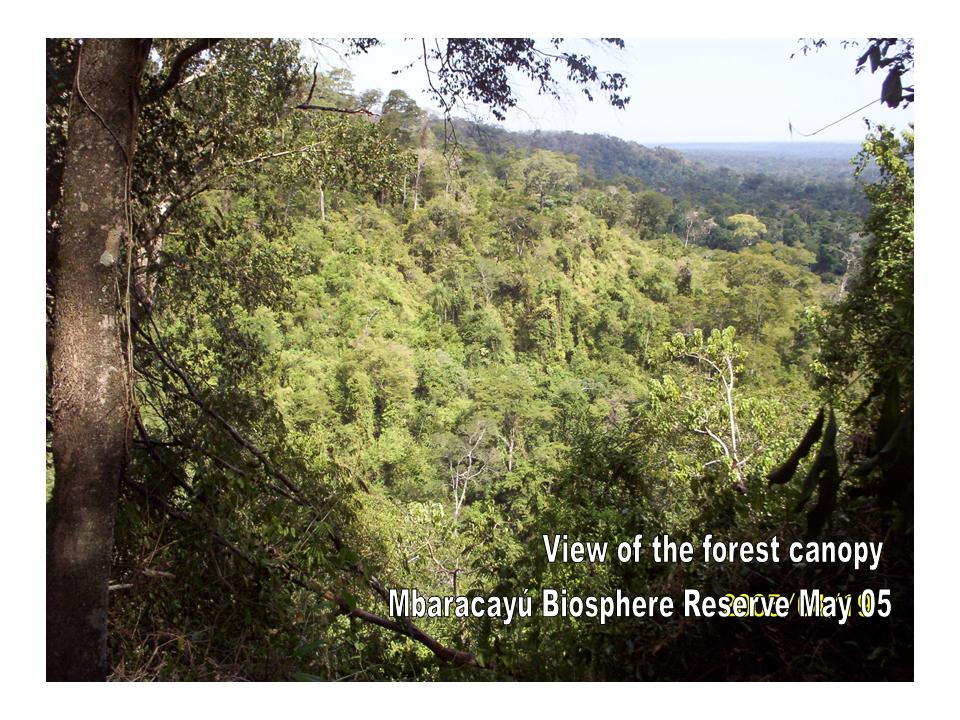
Atlantic may seem an odd name to attach to the Paraguayan forest, given that the country is landlocked and over 600km from the Atlantic Ocean, but there is reason behind the madness. The Paraguayan Atlantic forest (strictly Alto Paraná Atlantic Forest) is an extension of a once great forest tract that stretched from coastal eastern Brazil, inland through southern Brazil to eastern Paraguay and northern Argentina. Sadly it no longer does and even sadder still, most of this destruction has taken place over the last 50 years for little financial or social gain.According to the most optimistic of estimates only 5% of the Brazilian Atlantic forest
remains (much of it fragmented), 8% of the Paraguayan forest remains and the majority of what is left in Argentina is within the boundaries of Iguassu National Park. The situation is so serious in fact that Conservation International declared the Atlantic forest as of the “highest conservation priority”, ie in more urgent need of salvation than any other habitat on earth!
The Atlantic forest is every bit as unique as Amazonia, a total of 124 species are endemic to this type of forest, 81 of these being found in Paraguay. While most birders head to Brazil to look for these endemics, more and more are now seeing the advantages of finding them in Paraguay. Firstly, being a smaller, cheaper country, the Atlantic forest in Paraguay can be explored with considerably less travelling and expense involved, secondly many of the endemics that are scarce or hard to find in Brazil are easy to see in Paraguay (eg Southern Bristle-tyrant, Grey-hooded Flycatcher) and thirdly Paraguay has a top class, first rate website to help with identification. But enough shameless self-promotion, what birds can the visiting birder expect to see on a visit to the Paraguayan Atlantic Forest?
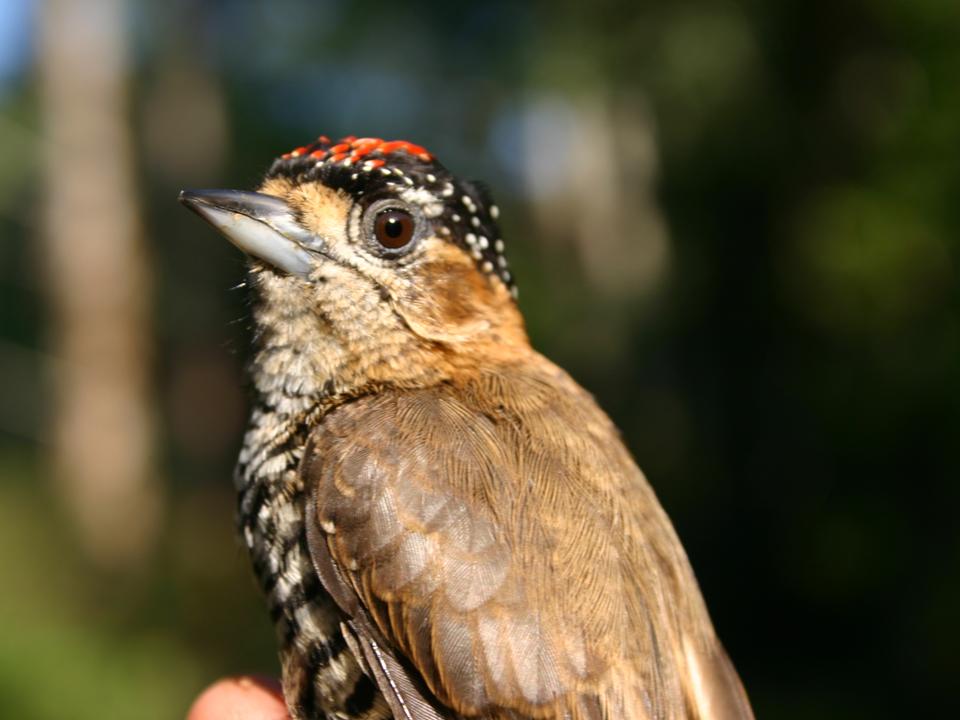
One of the first things that visitors to the Atlantic Forest notice are the mixed species flocks. In fact you can walk for several hours without seeing a thing, then suddenly find yourself in the midst of a huge flock surrounded by so many birds that you can´t decide which one to focus your bins on first! I counted a total of 38 species in a single mixed flock at San Rafael National Park, and I missed the other half!
Tanagers are a major component of these aggregations, the handsome Guira Tanager, dazzling Blue Dacnis, the acrobatic Chestnut-vented Conebill and the ill-tempered Hooded Tanager - and that’s just the canopy species! Mixed flocks tend to consist of several layers, a canopy group comprised mainly of the previous species with a host of other species such as Tropical Parula and Chestnut-bellied Euphonia, a midstorey group that largely consists of climbing furnarids such as Olivaceous Woodcreeper, Streaked Xenops and Ochre-breasted Foliage-gleaner (to name but a few) and trailing along behind an undergrowth component, typically involving Chestnut-headed Tanager, Lesser Woodcreeper (bottom right), Buff-browed Foliage-gleaner and even Ochre-collared Piculet (top right) amongst others. In fact some species make a living from these groups and are almost never seen away from them. There are certain advantages to foraging in a group like this. The obvious one is defensive, more eyes means more chances that danger will be spotted, but perhaps more importantly the continuous movement of waves of fruit-eating birds through the forest creates a disturbance, scaring up
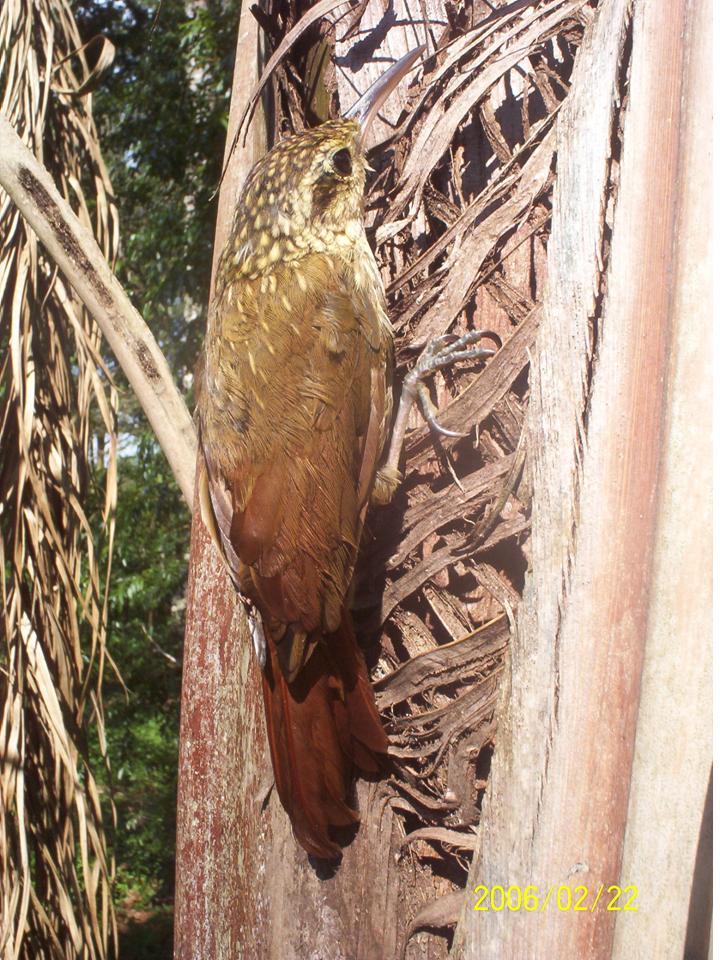
clouds of insects which the insectivores are just waiting to pounce on.
Besides the tanagers, the other major group of birds in the Atlantic Forest are the antbirds. Skulking and extremely difficult to see, familiarisation with the their voices is the only way you will realise just how abundant these birds can be. Plain Antvireo and Variable Antshrike are usually the two commonest species, but listen carefully and you will find a whole host of other species lurking in the shadows such as Short-tailed Antthrush, White-backed Fire-eye, Streak-capped Antwren, Spot-backed Antshrike and big brutes like Large-tailed and Tufted Antshrikes. The antbirds are as frustrating as they are fascinating!
Typical of the Atlantic Forest are tangles of Chusquea bamboo. This isnt the giant stuff that you see pandas gnawing on (bigger bamboo here is called Tacuara), but a thin, gnarly, leafy, inpenetrable mess - you can tell it is bamboo from the jointed stems. The Chusquea has its own unique avifauna lurking in its darkened depths. The dumpy Ochre-faced Tody-Flycatcher (famed for its flatulent call) is almost exclusively found in this stuff, as is the Dusky-tailed Antbird. Rufous-capped Spinetail loves it too, teasing you with its endless drrrt-wick call but never quite giving you more than the briefest of glimpses of its handsome plumage. Look out too for Yellow Tyrannulet, they tend to hang around clearings dominated by this stuff, while the unique Plovercrest hummingbird often selects an area of Chusquea as the performing ground for their group displays or leks.
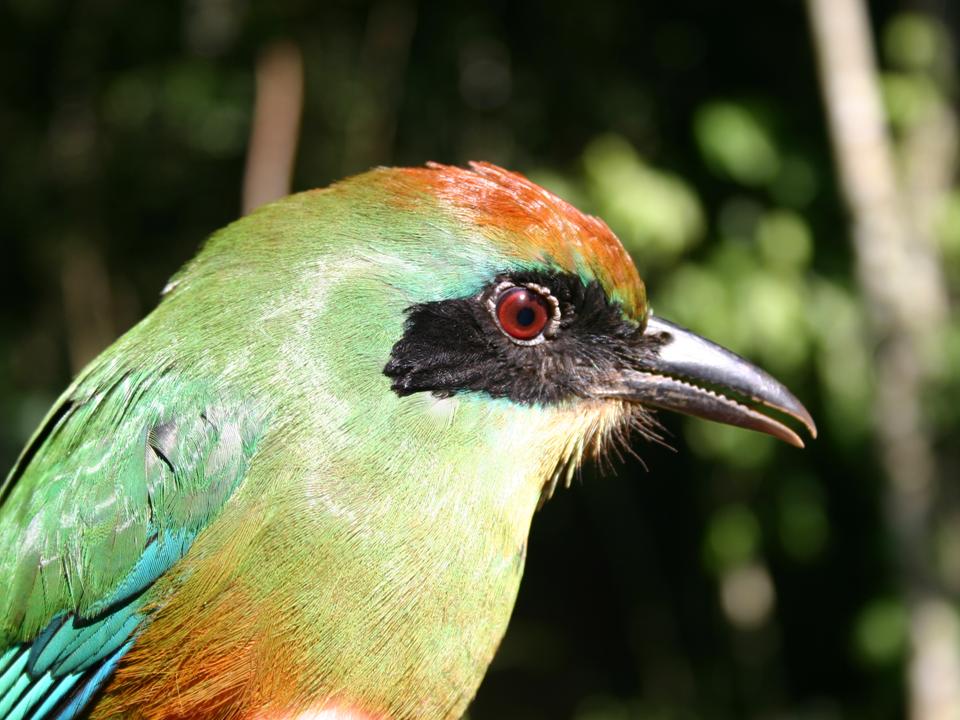
Everybody loves the big colourful birds, and they don’t come much bigger or more colourful than the toucans. Five species inhabit the Paraguayan Atlantic Forest, from the massive Red-breasted Toucan is one of the largest, while the secretive Spot-billed Toucanet - more often detected by his frog-like voice than by sight - is the smallest. Perhaps the most unusual though is the bright yellow Saffron Toucanet, known as the Banana Toucan in Brazil, a social species and in grave danger of extinction. Other big bright birds include the trogons, the motmots (top left) and of course the parrots. Despite their bright green colouration parrots can be extremely difficult to see in the forest canopy where they usually feed in silence - youre far more likely to see a flock go screeching overhead. Familiarisation with the different body shapes is your best for identifying them. The Scaly-headed Parrot is large-headed and short-tailed, while the Reddish-bellied Parakeet is small, slender and long-tailed. If its small and short-tailed then you likely have a Pileated Parrot, while a big parrot with a long tail is probably one of the Aratinga parakeets! Confused? You will be!
The group that are perhaps most frequently associated with the Neotropics are the hummingbirds - with the
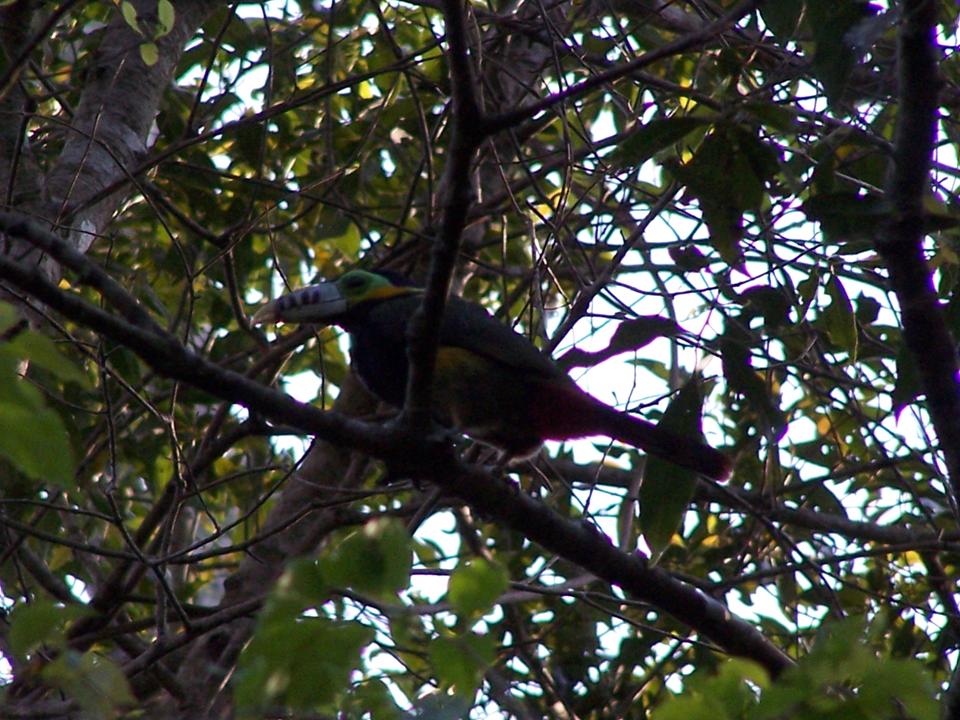
Neotropics are the hummingbirds - tiny things like feathered helicopters and the only birds capable of flying backwards. Typical Atlantic Forest species are the endemic Scale-throated Hermit, the Violet-capped Woodnymph and the Versicoloured Emerald. Hummingbirds can be a bit elusive in the forest undergrowth, but find a decent flowering bush and it can be teeming with them. Flowers pollinated by birds tend to be a combination of orange, red or yellow.
Even the forest floor has its resident species. The most well-known group of ground birds are the tinamous, which include amongst their number the gigantic Solitary Tinamou. Tinamous are gamebirds, superficially like tail-less chickens or partridges, and all species possess distinctive voices that can be the only clue to their presence. The Slaty-breasted Wood-Rail is an endemic Atlantic Forest ground bird that unlike most other members of its family has no dependence on water. Look out too for other terrestrial species, the Rufous-breasted Leaftosser, Spot-winged Wood-Quail and the White-tipped Dove.
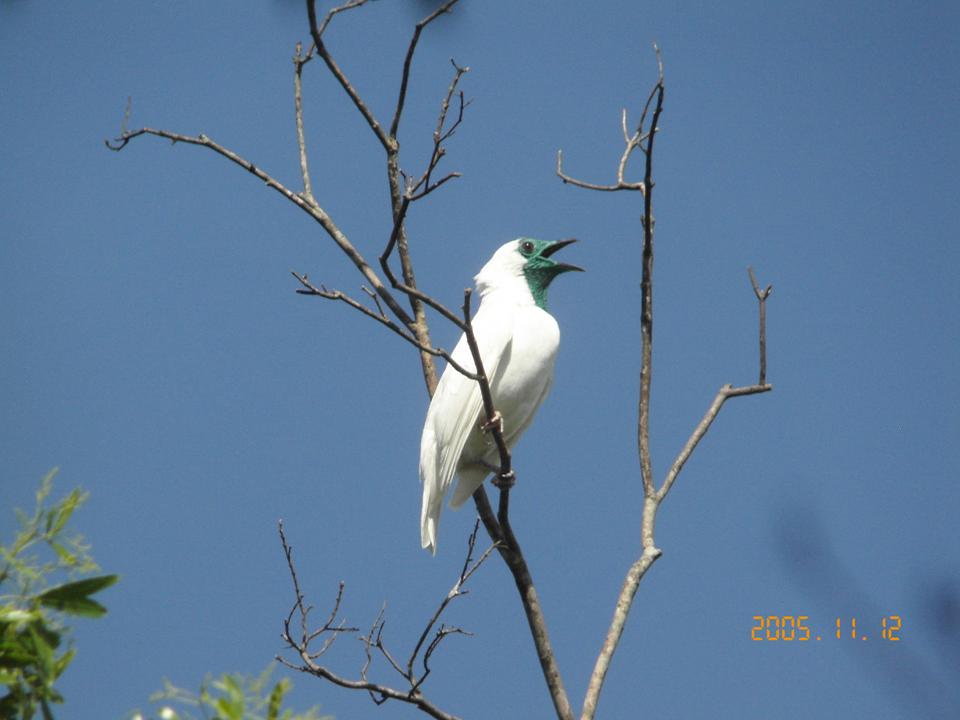
As you can see the avifauna of the Atlantic Forest is as diverse as it is plentiful and an article such as this could easily become a book if it were to treat in detail all of the species that you might see on a single forest walk. There just remains space to mention one more, very special Atlantic Forest inhabitant, the national bird of Paraguay and emblem of FAUNA Paraguay, the Bare-necked Bellbird (right). Its earsplitting call heard from September through to March has become the centrepiece for numerous Paraguayan folk songs, legends and complaints about the racket! The call has an echoing quality that can make it hard to trace, but keep walking until it becomes so loud that it feels like it is chipping away at your skull, then look up! The white-plumaged male is hidden somewhere in the branches just above your head!







